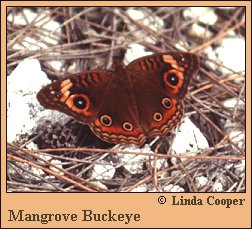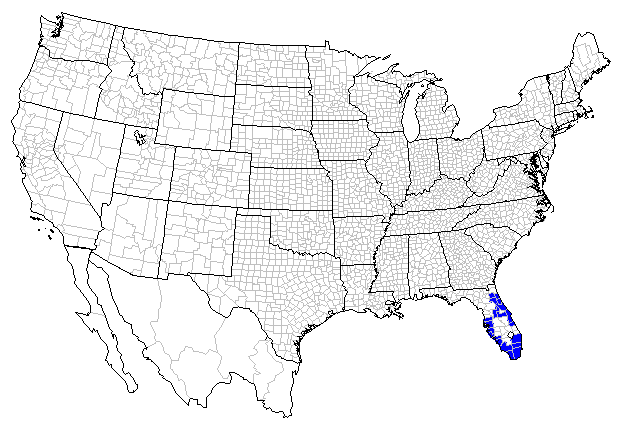 |
 

 |



Mangrove Buckeye (Junonia evarete [Cramer])
Wing span: 1 3/8 - 2 1/4 inches (3.5 - 5.7 cm).
Identification: Upperside is brown; forewing has a narrow orange band which rings the large eyespot; eyespot is never ringed with brown. Underside of the hindwing is brown, usually without bands or eyespots; median band is jagged.
Life history: Caterpillars eat leaves of mangrove trees. Adults overwinter.
Flight: Several broods from March-October.
Caterpillar hosts: Black-mangrove.
Adult food: Flower nectar.
Habitat: Tidal flats and black-mangrove swamps.
Range: Atlantic coast of Mexico north to South Texas, the West Indies, and extreme southern Florida.
Conservation: Monitor populations in south Florida and assess possible conservation needs.
The Nature Conservancy Global Rank: G5 - Demonstrably secure globally, though it may be quite rare in parts of its range, especially at the periphery.
Management needs: None reported.
References:
Opler, P. A. and V. Malikul. 1992. A field guide to eastern butterflies. Peterson
field guide #4. Houghton-Mifflin Co., Boston. 396 pages, 48 color plates.
Scott, J. A. 1986. The butterflies of North America. Stanford University Press,
Stanford, Calif. 583 pages, 64 color plates.
Author: Jane M. Struttmann

